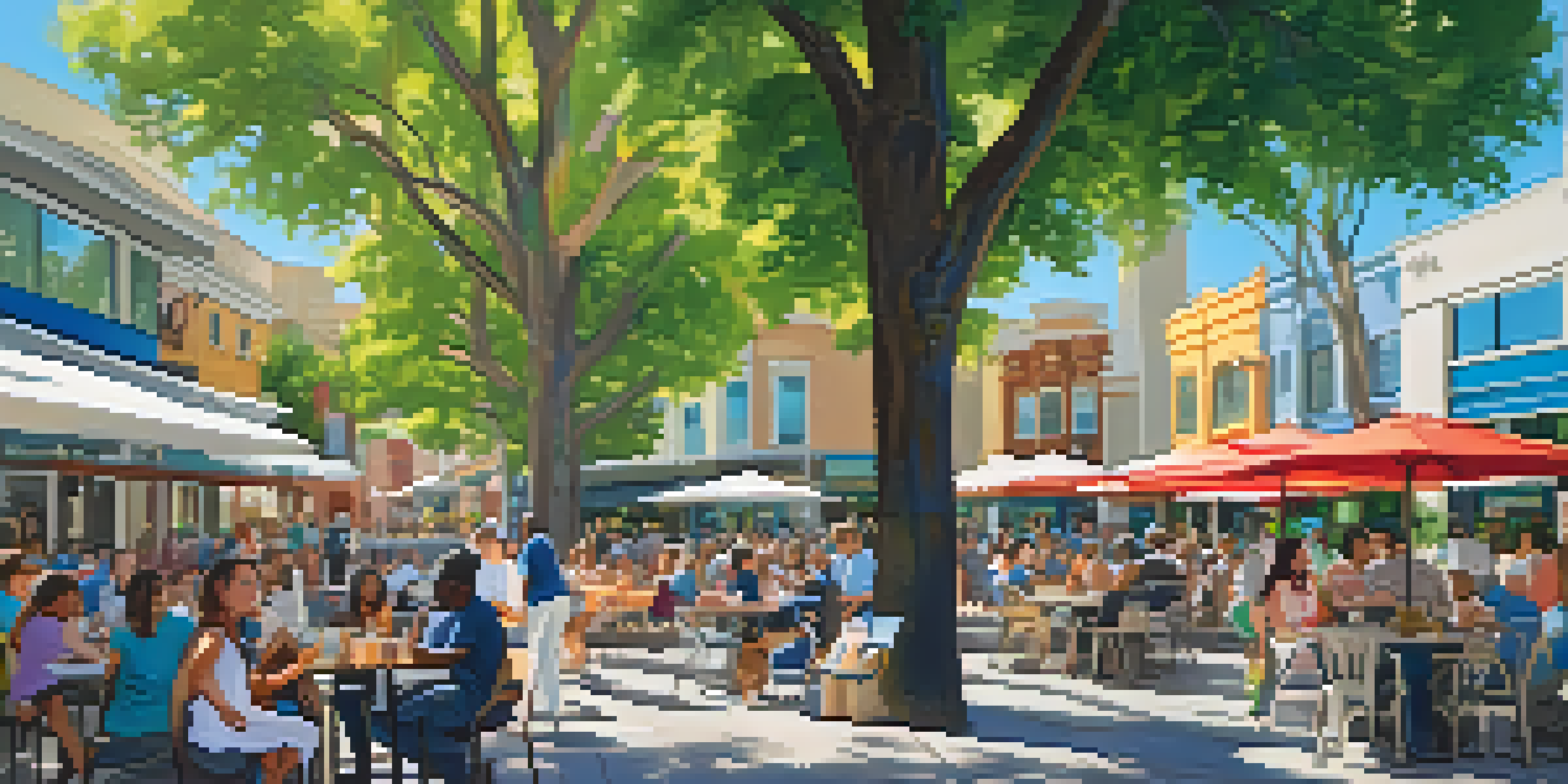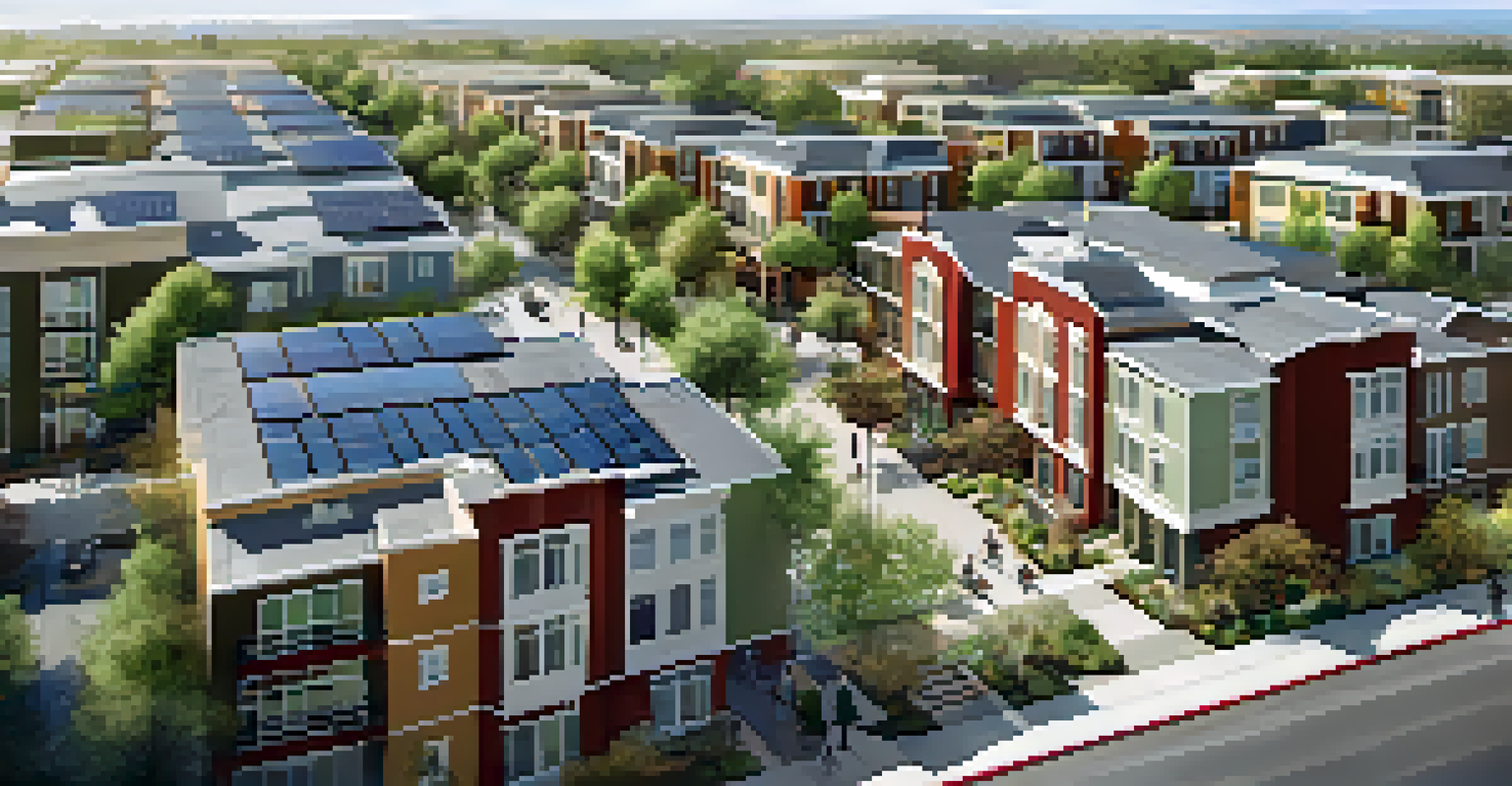Revitalization Projects and Their Effects on Redwood City Real Estate

Understanding Revitalization Projects in Redwood City
Revitalization projects refer to initiatives aimed at renewing urban spaces, often focusing on enhancing infrastructure, aesthetics, and community engagement. In Redwood City, these projects have become pivotal in transforming the city’s landscape, making it more appealing to residents and businesses alike. By investing in public spaces, transportation, and housing, the city aims to foster a more vibrant and sustainable environment.
Revitalization is about more than just physical improvements; it's about creating spaces where communities can thrive.
These projects can take various forms, including the renovation of parks, the development of mixed-use buildings, and improvements to transportation networks. For instance, the recent upgrades to the downtown area have attracted new businesses and visitors, breathing new life into what was once a quieter part of the city. This transformation not only enhances the physical environment but also creates a sense of community pride.
As these revitalization efforts continue, they play a crucial role in shaping the future of Redwood City. Understanding their impact on real estate is essential for both buyers and investors looking to navigate this evolving market. The changes brought about by these initiatives can significantly influence property values and the overall desirability of the area.
Key Revitalization Projects Influencing Real Estate Trends
Several notable revitalization projects have already made a mark on Redwood City's real estate landscape. One standout initiative is the development of the Redwood City Civic Center Plaza, which not only serves as a community gathering space but also enhances the appeal of nearby residential and commercial properties. Such projects not only beautify the area but also increase foot traffic, benefiting local businesses.

Another essential project is the ongoing improvements to the city’s transportation infrastructure, including the expansion of biking and walking paths. These enhancements make it easier for residents to navigate the city and connect with surrounding areas, which in turn boosts the attractiveness of neighborhoods and increases property values. Homebuyers often seek locations that offer convenience and accessibility, making these improvements vital.
Revitalization Boosts Property Values
As urban spaces in Redwood City are enhanced through revitalization projects, property values tend to rise due to increased demand for nearby amenities.
Additionally, the creation of mixed-use developments has changed the game for Redwood City real estate. By combining residential units with retail and office spaces, these projects appeal to a wide range of potential buyers and renters, further driving demand in the market. As more of these developments emerge, they will likely continue to shape the city’s real estate dynamics.
The Impact of Revitalization on Property Values
Revitalization projects can significantly influence property values in Redwood City. Typically, as an area undergoes improvements, property prices tend to rise due to increased demand. Buyers are often willing to pay a premium for homes located near newly developed amenities and facilities, which can lead to substantial returns on investment for property owners.
Sustainability is no longer a choice; it’s a necessity for the future of our urban landscapes.
For instance, neighborhoods adjacent to revitalized areas often see a ripple effect, where even homes a few blocks away benefit from the increased desirability of the location. This phenomenon, known as gentrification, can lead to higher rents and home prices, sometimes making it challenging for long-time residents to keep up. However, it also creates opportunities for investors looking to capitalize on the growing market.
It's important for potential buyers to stay informed about these trends, as they can impact their purchasing decisions. Understanding which areas are experiencing revitalization can help buyers identify properties that are likely to appreciate in value over time. A proactive approach can lead to finding hidden gems in a rapidly changing real estate landscape.
Community Engagement and Its Role in Revitalization
Community engagement is a key component of successful revitalization projects. In Redwood City, local residents and businesses often have a say in the development process, ensuring that projects align with the needs and desires of the community. This collaborative approach not only fosters a sense of ownership among residents but also leads to more sustainable and effective outcomes.
For example, public forums and workshops allow community members to voice their opinions and contribute ideas for enhancing their neighborhoods. This input can shape everything from park designs to transportation routes, ensuring that revitalization efforts meet the specific needs of the area. When residents feel involved, they are more likely to support and invest in their community.
Community Engagement Drives Success
Involving local residents in the development process ensures revitalization projects meet community needs, fostering support and investment in the area.
Moreover, successful community engagement can enhance the overall perception of an area, making it more appealing to prospective buyers and investors. When potential homeowners see a community that values input and collaboration, they are often more inclined to make a purchase. This dynamic underscores the importance of fostering a strong community connection in the context of real estate.
Sustainability in Revitalization Projects
Sustainability has become a central theme in many revitalization projects across the country, and Redwood City is no exception. Efforts to incorporate green building practices and environmentally friendly designs not only benefit the planet but also attract eco-conscious buyers. Features like energy-efficient buildings, green roofs, and sustainable landscaping are increasingly becoming selling points in the real estate market.
For instance, new developments often prioritize access to public transportation, reducing reliance on cars and encouraging a more walkable lifestyle. This not only helps reduce carbon footprints but also creates a more vibrant urban environment, which can positively influence property values. As more buyers seek out sustainable living options, the demand for such properties is likely to grow.
In addition, sustainable practices can lead to long-term cost savings for homeowners, making them even more attractive. By investing in properties that prioritize environmental responsibility, buyers can enjoy lower utility bills and a smaller environmental impact. This shift towards sustainability is reshaping the real estate market in Redwood City and beyond.
Challenges Faced by Revitalization Efforts
While revitalization projects can have numerous benefits, they also come with their share of challenges. One major issue is the potential displacement of existing residents, particularly in lower-income neighborhoods. As property values rise, long-time residents may find it increasingly difficult to afford their homes, leading to concerns about gentrification and social equity.
Additionally, navigating the regulatory environment can be cumbersome for developers and city planners. Zoning laws, permits, and community opposition can slow down progress and complicate project implementation. Ensuring that revitalization efforts align with local needs while also adhering to regulations requires careful planning and collaboration among stakeholders.
Sustainability Shapes Real Estate Trends
The incorporation of sustainable practices in revitalization projects is attracting eco-conscious buyers and reshaping the real estate market in Redwood City.
Despite these challenges, many cities—including Redwood City—are working to strike a balance between revitalization and community preservation. By prioritizing affordable housing and engaging residents in the decision-making process, cities can create a more inclusive approach that benefits everyone. Addressing these challenges head-on is crucial for the future success of revitalization endeavors.
Looking Ahead: The Future of Redwood City Real Estate
As Redwood City continues to invest in revitalization projects, the future of its real estate market looks promising. With ongoing efforts to enhance infrastructure, promote sustainability, and engage the community, the city is poised for growth. Buyers and investors can expect to see new opportunities arising as the landscape evolves.
Moreover, the focus on creating a vibrant urban environment is likely to attract a diverse population, from young professionals to families seeking a community-oriented lifestyle. This influx of residents can further drive demand for housing, resulting in a dynamic real estate market. For those considering a move to Redwood City, the timing may be just right.

In conclusion, revitalization projects are shaping the future of Redwood City’s real estate. By understanding the trends and implications of these efforts, potential buyers and investors can make informed decisions that align with their goals. As the city continues to transform, staying ahead of the curve will be essential for navigating this exciting market.